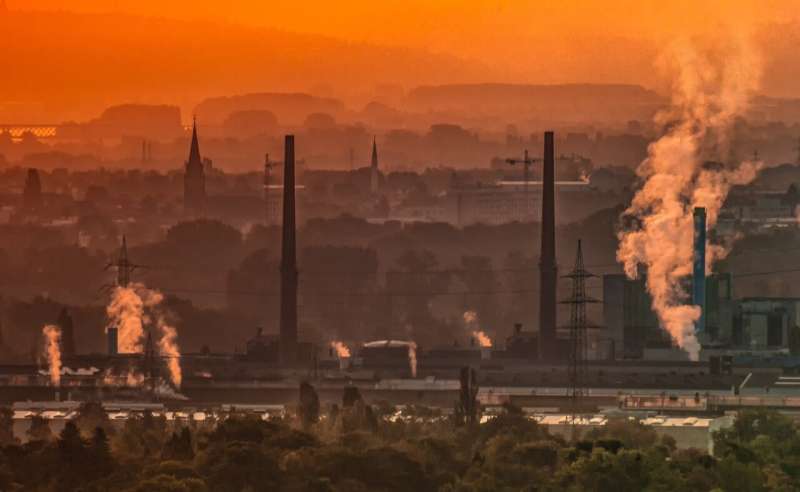This article has been reviewed according to Science X's editorial process and policies. Editors have highlighted the following attributes while ensuring the content's credibility:
fact-checked
peer-reviewed publication
trusted source
proofread
Racial gap in air quality may persist under Biden program, study finds

A Biden administration program designed to address environmental inequalities, including reducing the air quality gap between white communities and communities of color, may not succeed. That's due, in part, to the administration's decision not to include racial demographics in a new tool that will be used to evaluate proposed regulations or policies, finds a new study published online July 20 in the journal Science.
Across the U.S., disadvantaged communities—including low-income communities and communities of color—experience higher levels of air pollution than wealthier and predominantly white communities. These inequities are largely rooted in decades of discriminatory land use decision-making and housing practices, including redlining.
To reduce these disparities, the Biden administration has committed to ensuring that 40% of the benefits from its climate change and energy investments accrue to disadvantaged communities. This initiative, known as Justice40, uses the Climate and Economic Justice Screening Tool (CEJST) to target so-called disadvantaged communities for government programs and investment. While CEJST considers a variety of burdens on communities—including poor health, climate change risk and low income levels—it does not explicitly factor in race or ethnicity.
The new study used simulations of air quality to model how using CEJST to target reductions in fine particulate matter (PM2.5) might affect overall ambient air pollution exposures and exposure disparities over the next 20 years. The modeling showed that, while these deeper reductions in disadvantaged communities identified by CEJST could improve overall air quality, they will not significantly reduce racial and ethnic air pollution disparities.
"There's been a lot of concern among scientists and advocates about the fact that the CEJST does not include any indicator about the racial or ethnic makeup of the census tracts that are being screened," said study co-author Rachel Morello-Frosch, a professor in the Department of Environmental Science, Policy and Management and the School of Public Health at the University of California, Berkeley, and a member of the White House Environmental Justice Advisory Council.
"Our findings demonstrate that, by not including race, you lose the ability to track and target racialized inequities in environmental hazard exposures. You can improve overall air quality, but you lose the opportunity to eliminate racial inequities in pollution burdens if you don't evaluate them directly," said Morello-Frosch.
Though the Justice40 initiative aims to address racial inequities, the CEJST was designed to be race-neutral to avoid potential legal issues. Just last month, the U.S. Supreme Court issued a decision restricting the use of race as a factor in determining college admissions. A similar challenge to the Justice40 initiative could derail the entire program.
However, the study shows that the factors included in the CEJST ultimately won't succeed at addressing the country's large racial disparities in air pollution exposure.
"Our findings emphasize that you're not going to be able to evaluate and solve racial and ethnic inequalities for air pollution without considering race in some way, because a lot of the things that you think might be a proxy for racial inequalities don't work terribly well for addressing the large, racialized disparities in air pollution exposure," said study co-author Joshua Apte, an associate professor of civil and environmental engineering at UC Berkeley.
The study also highlights the need for regulators to continue to quantify the impact of air quality policy and regulations on different racial and ethnic groups. New air pollution simulation tools—including those developed by Apte and Julian Marshall, a professor of civil and environmental engineering at the University of Washington, Seattle—could help regulators understand the future impacts of new rules and regulations.
"It's really possible now for the federal government to evaluate prospectively whether their policies are going to make a difference on racial and ethnic inequalities in air pollution exposure, because we have modern air pollution simulation tools that can do that," Apte said. "The government absolutely should be using these tools to assess the environmental equity implications of current and proposed regulations."
More information: Yuzhou Wang et al, Air quality policy should quantify effects on disparities, Science (2023). DOI: 10.1126/science.adg9931
Journal information: Science
Provided by University of California - Berkeley




















